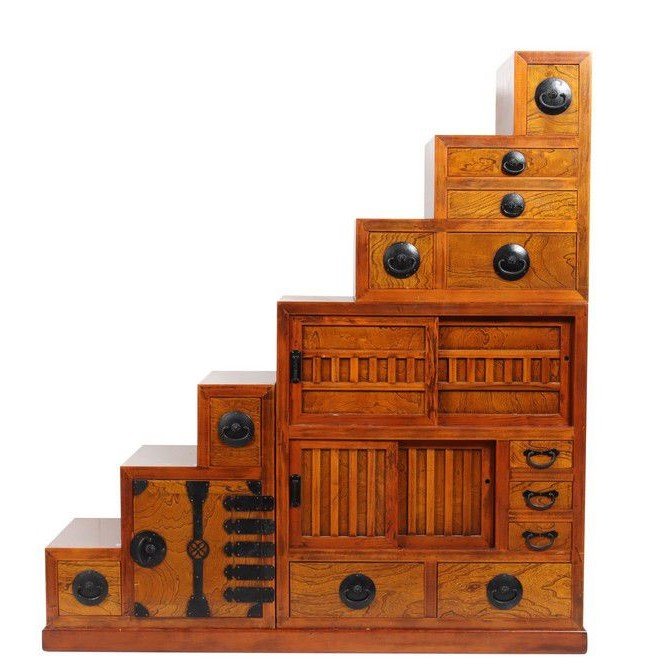We feel it’s necessary to set the record straight regarding the Korean staircase. Indeed, numerous posts in our group, as well as the frequent presentation of this type of furniture with their erroneous descriptions in auctions or galleries, have led us to resolve this matter once and for all.
Here are just a few examples with their descriptions.
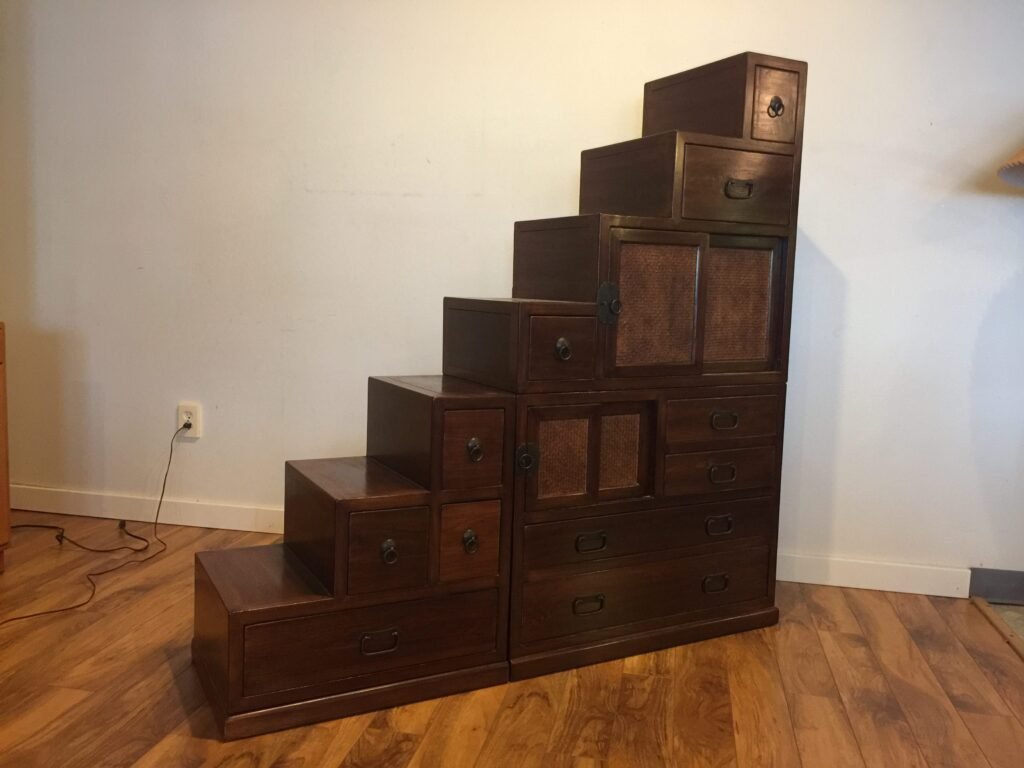
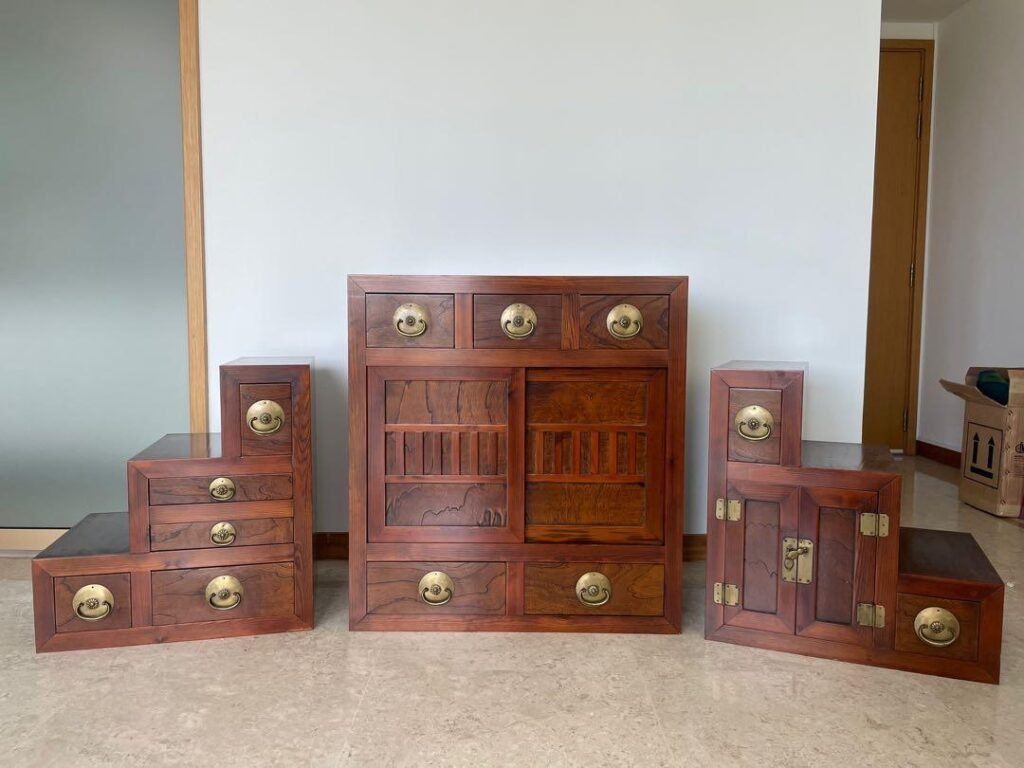
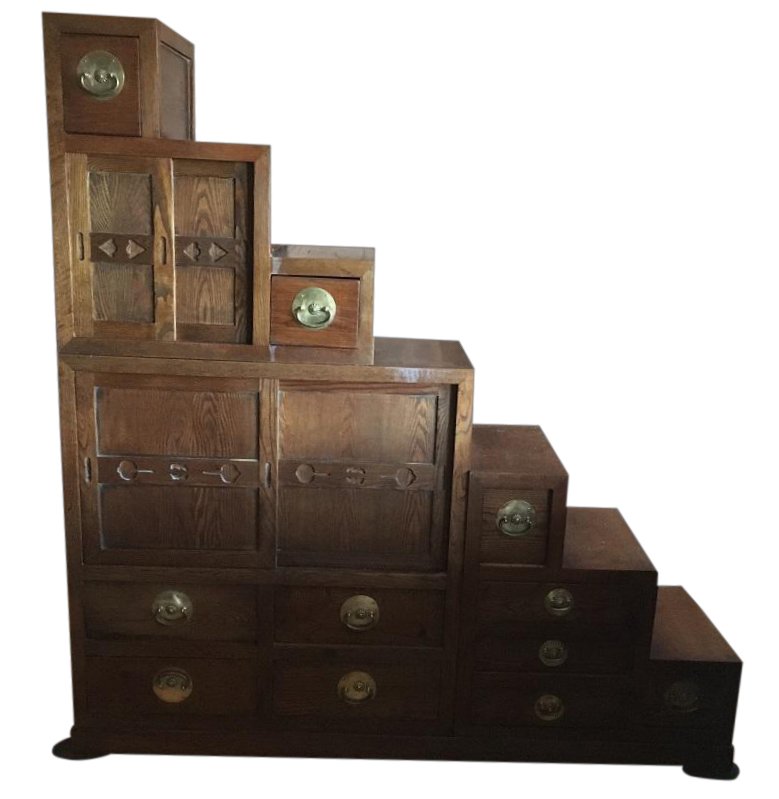
Access to drawers and cabinet sections from both sides. Chest is four pieces, easy to move, can be set up 2 ways for use.
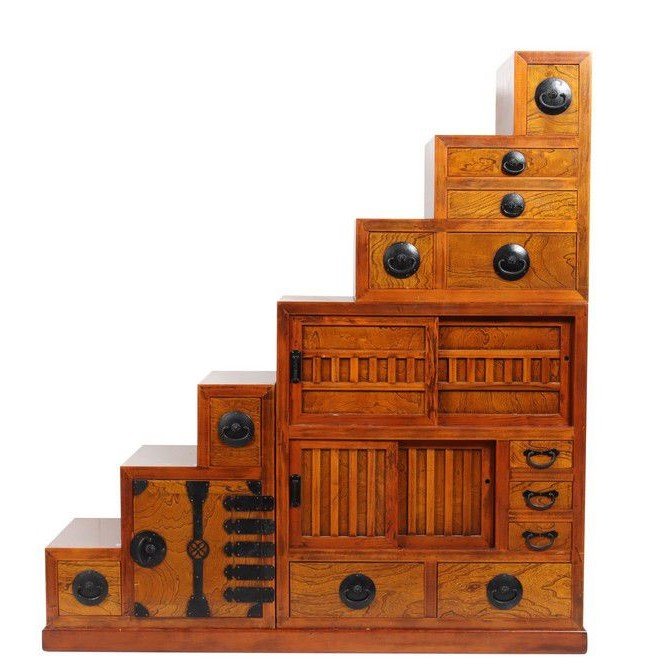
Below is an extract from the publication “Japanese cabinetry” the art & craft of tansu by David Jackson and Dane Owen.
The step chest has been classified in the section Kitchen cupboards.
The “Kaidan dansu” (step-chest) or Hako kaidan (box stairs) may well have been invented around the same time as the Mizuya”. It is a compelling design, providing both storage space and access to an upper story or loft.
Kaidan dansu were freestanding staircases, often made in two or three stacking sections with compartments secured by doors; this type of drawer storage was not only a cabinet but also an architectural statement.
In their infancy, kaidan dansu could have been built by carpenters, but the design is really about utilizing compartments for furnishings and architectural space under the stairs for storage. Carpentry, on the other hand, was a specialized profession, with a rigid structure and tradesman’s rules; thus, it is difficult to believe that a carpenter stepped out of this discipline and created the step chest. Rather, it is thought that the joiner was the craftsman who likely saw a need and filled it.
Step chests most likely originated where “Kura” (masonry storehouses) were first built, for these were some of Japan’s first two-story buildings. Commercial and bustling castle towns such as Kurashiki, salai, kanazawa, Osaka and Edo had row after row of “kura”. they were expensive buildings, and kaidan dansu were not cheap to build.
While the Edo period restrictions forbade most two-story housing, especially for commoners, attics and loft places nonetheless sprang up. Indeed, in these crowded urban centers, often the only way to expand a structure was to build upwards.
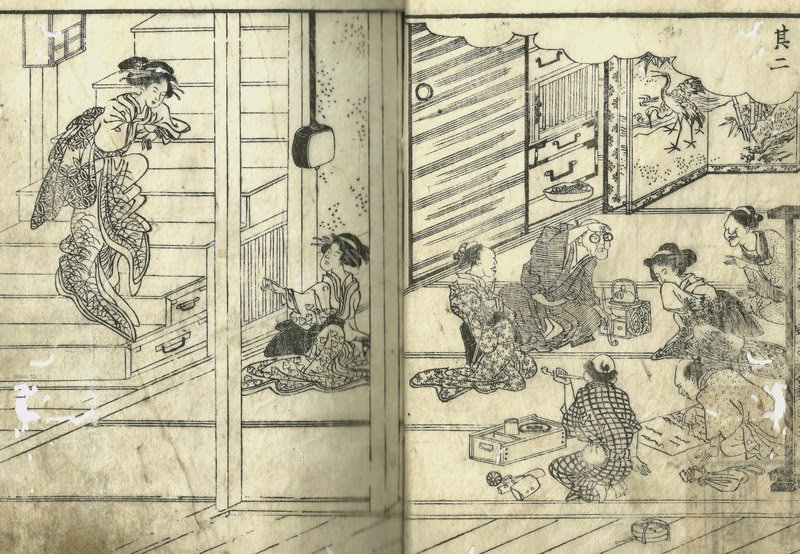
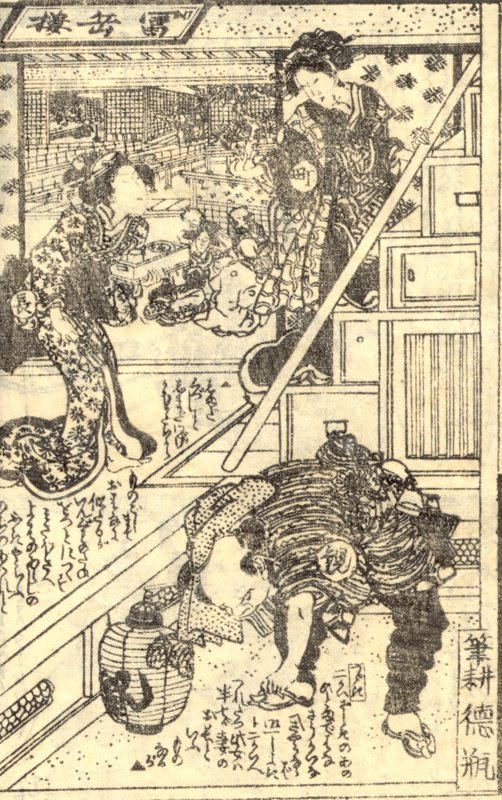
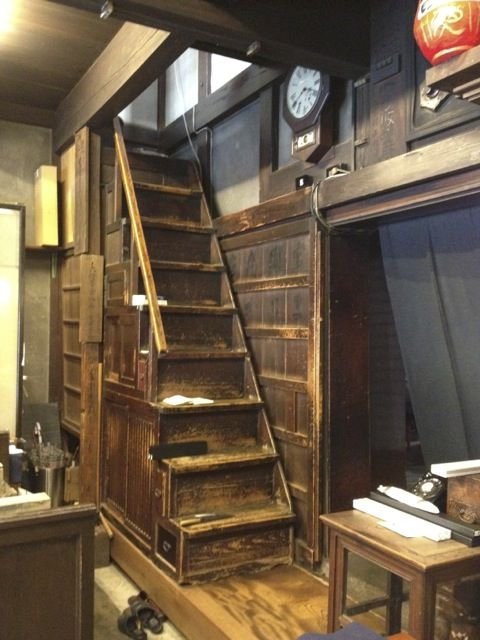

Height 69″. Width 38″. Depth 24.75″. Auction in the US.
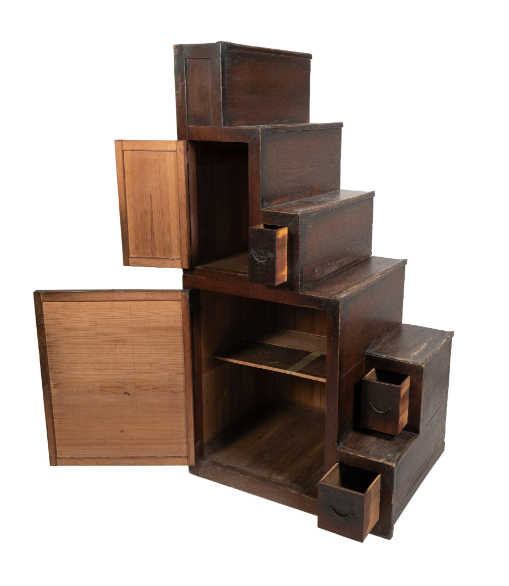
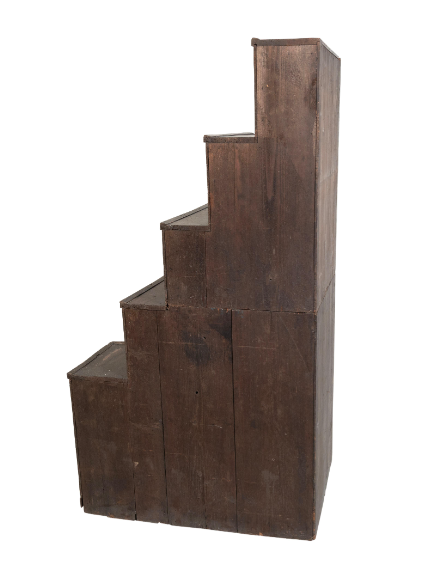
ORIGINAL KAIDAN TANSU.

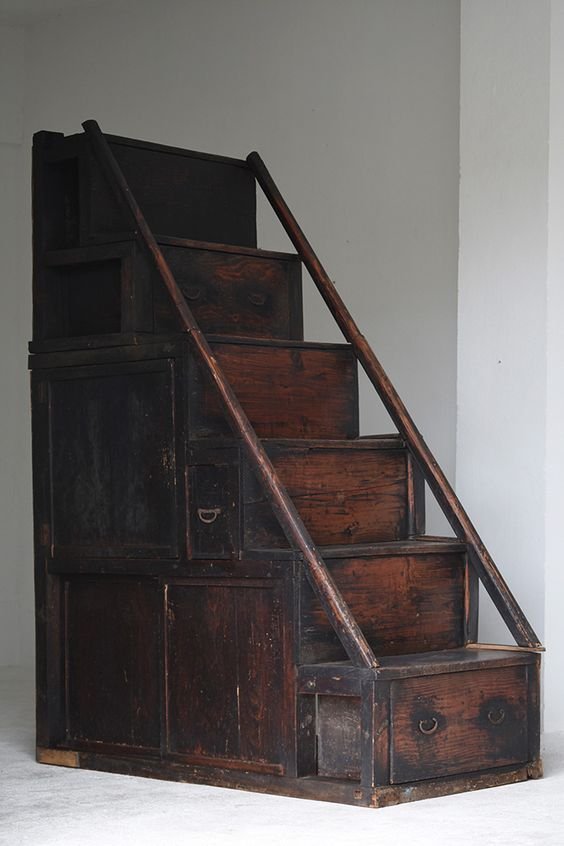
Meiji period. Japan. Collection “Apologia”, Tokyo, Japan.
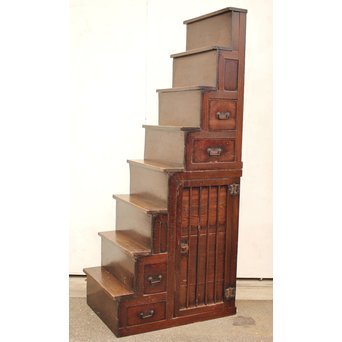
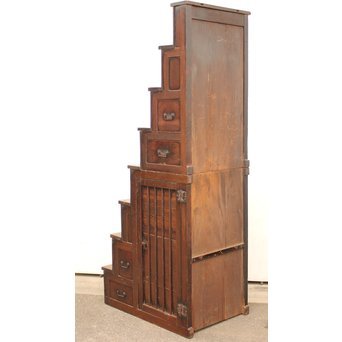
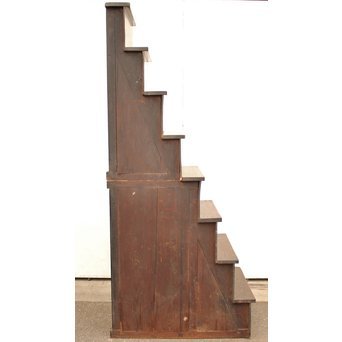
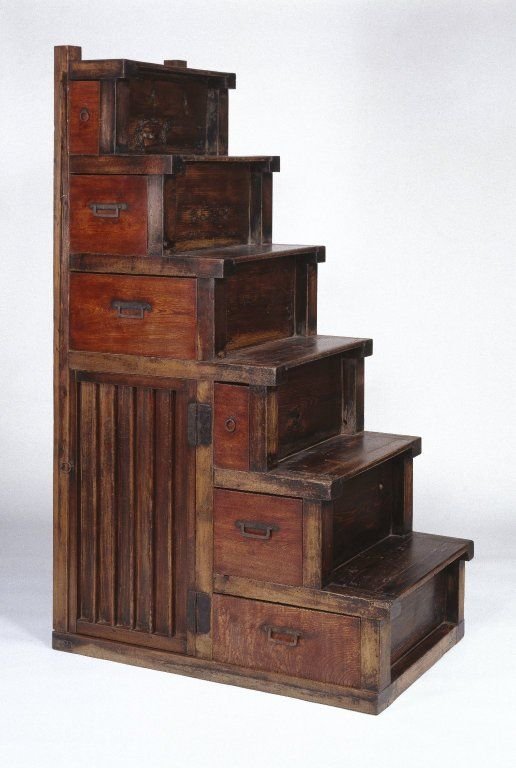
Kaidan-dansu (階段箪笥). An article published by the Brooklyn Museum.
A unique tansu furniture style emerged called kaidan tansu. The Japanese word for stair is kaidan. Thus, the kaidan tansu is a stair trunk, or group of stacked trunks which also forms a stairway. This cabinet hybrid originated in central Honshu. Found in traditional rustic Japanese country estates, and the Imperial palace from the Edo era into the Meiji Period.
The kaidan tansu is a powerful visual element in the Japanese home, which otherwise is very sparsely furnished with small pieces, (arm rest, small tables or a kimono stand). The kaidan tansu of Japan are very large Japanese furniture pieces, often 6 feet wide and over 9 feet high, yet as grand as they are, they still remain aesthetically and spatially stimulating due to a unique visual sense of movement that stems from descending size of boxes stacked to form a stairway. Kaidan are strong and grounded. They represent a style of furniture/architecture which is economical, simple and functional. The stairway was often steep dark and polished wood as seen to the right.
These step chests, often of modular construction, incorporated drawers and sliding doors. Though primarily intended as stationary adjuncts to the building architecture, they were designed to be moveable if necessary. In the Tohoku region north of Tokyo, kaidan-dansu were sometimes positioned in farmhouses for attic access and the seasonal nurturing of silkworms under the thatched roofing. This use of “structural dead space” for storage, thus leaving floor space more open.
CONCLUSION.
“Kaidan Tansu” staircase furniture is undoubtedly of Japanese origin. In most cases, traditional Korean houses did not feature an upper floor or loft, whereas in Japan, they did.
The term “Kaidan Tansu” is Japanese in origin, with “Kaidan” meaning staircase and “Tansu” meaning chest in Japanese. The reason for this confusion is that in the mid-20th century, Koreans began producing staircase furniture for export. Compared to their own traditional furniture, the highly popular staircase furniture offered numerous advantages in terms of design and functionality.
However, there are several distinguishing details that set them apart from each other:
- The original Japanese pieces were notably tall and deep, with an average height of around 2 meters and a depth ranging from 60 to 75cm.
Their hinge decoration was minimal, typically in black iron. - These pieces were positioned against walls and opened on just one side.
- Conversely, the pieces made in Korea were smaller and often much lower, with an overall height of 170cm. Their depth rarely exceeded 45cm.
- In most cases, they could be opened on both sides, allowing them to be placed in the center of a room.
- These Korean pieces were often adorned with numerous metallic hinges, often made of yellow brass.
When considering the woods used to build the Kaidan Tansu, it’s important to note that these were primarily utilitarian pieces of furniture. As a result, the choice was made for easily accessible and affordable wood species. In Japan, “Sugi” cedar from the “Cryptomeria Japonica” family and “Hinoki” cypress or “Chamaecyparis Obtusa” were commonly used. In rarer cases, elm known as “Keyaki” or “Zelkova serrata” could be used for constructing small parts such as drawers.
Regarding reproductions made in Korea, pine was typically used for the structure, and elm was used for the panels. In the 1980s, due to the high cost of wood, a new method of mass production was introduced to meet the demands of a growing market: the extensive use of plywood covered with thin elm veneers.

